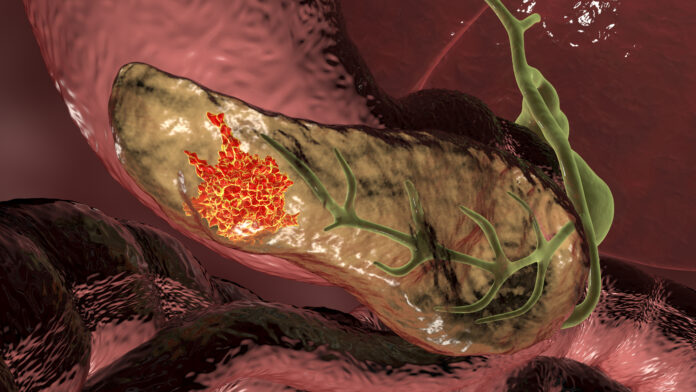
Researchers at Weill Cornell Medicine have unveiled a compound known as perhexiline maleate as a promising new target for future pancreatic cancer treatments using a drug screening process based on organoids.
Reporting in Cell Stem Cell, the study involved the testing of over 6,000 compounds on pancreatic tumor organoids—three-dimensional structures grown in the laboratory that mimic the complexity of human pancreatic tissue. The organoids contained a common pancreatic cancer-driving mutation, in the KRAS gene, allowing scientists to model and analyze the behavior of the disease under various conditions. The team identified a compound, perhexiline maleate, a drug previously used to treat heart disease, that exhibited potent suppression of the organoids’ growth.
“Our findings identify hyperactive cholesterol synthesis as a vulnerability that may be targetable in most pancreatic cancers,” said Todd Evans, the study’s co-senior author and vice chair for research in surgery at Weill Cornell Medicine, highlighting the significance of the findings.
Organoids have emerged as powerful tools for studying tissues in health and disease. They can be engineered to replicate the complex architecture of organs and mimic specific tumor types with cancer-driving gene mutations. In this study, the researchers established an organoid-based automated drug-screening system for pancreatic ductal adenocarcinoma (PDAC), the most common form of pancreatic cancer. The organoids, derived from normal mouse pancreatic tissue, were genetically modified to contain mutations known to drive human pancreatic tumors.
The screening process revealed that perhexiline maleate, an FDA-approved heart drug used to treat angina, effectively blocked the growth of the organoids. Notably, the drug’s impact was specific to organoids containing the cancer-driving mutation, sparing healthy organoids without the mutation. Further investigations demonstrated that the mutation led to abnormally high cholesterol production in the organoid cells, and perhexiline maleate countered this effect by inhibiting a key cholesterol metabolic pathway regulatory factor.
The discovery of cholesterol’s role in fueling pancreatic cancer growth opens new possibilities for targeted therapies. Cholesterol, a vital building block for cell growth and survival, has been implicated in sustaining malignant growth in other tumor types. The researchers hope that targeting cholesterol synthesis may offer an effective treatment strategy against PDAC, particularly given perhexiline maleate’s effectiveness against organoids harboring different Kras mutations.
Despite the promising results, perhexiline maleate is unlikely to be directly used for treating PDAC due to its known side effects, including liver and peripheral nerve damage. Nevertheless, the researchers intend to use perhexiline maleate as a starting point for developing a more refined candidate drug specifically designed for PDAC treatment, envisioning optimization of the compound’s properties, such as potency and safety, to create a more effective and safer therapeutic option for pancreatic cancer patients.













